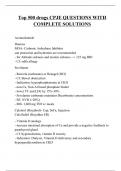motivation → prioritization an dchoose how to expend energy
motivation: concerns condition responsible variation intensity, persistence, quality ,
direction of ongoing behavior
3 dimensional: direction, intensity, persistence
100 years of motivation research
stay alert→ amusement→ higher satisfaction (factory and mill worker)
worker expectation, goal, competence
A brief history of motivation research:
instincts: inborn tendencies directing behavior
engage 'economic' instinct not circular nature
internal causes and not interaction individual and environment
need: internal motivation inborn and universally present in humans
drive: nonhuman equivalent of motive and need
Behaviorist approch: B.F Skinner
emphasis behavior and activity→ environment not internal need or instinct
→ nature vs nurture
Field Theory approach: Kurt Lewin
forces of psychological environment interact and combined→ final course of action
Group dynamics: grew out application field theory to industry
not relevant history
Person as machine: people behavior/ action reflexive and involuntary performed without
conscious awareness (1930-1960
About internal needs pushed by external stimuli > the indv. is not conscious and runs
on automated responses based on internal needs
Combo of internal and env. Stimuli
Person is passive to env.
people are not that rational > dont reason as much as the theory suggests they do
,Person as Scientist: people active information gatherers and analysts who seek knowledge
and understanding as a way of master environment
→ expectancies
shift late 1950s
want to know → what you want to know vary desires
Person is motivated due to intentions
Actively gather info and analyse it > more conscious
person as a judge (emotionality, responsibility, self-esteem)
limited rationality: inability human reason and make decision rational way
person as a judge: seek information to extent perceived responsible positive and negative
events → look evidence intention action others and choose course of action
higher amount time and effort → higher performance and higher productivity
→ Performance= (Motivation x Ability) - Situational constraint
Work Life Balance: research are investigate satisfaction at work in part affected non-work→
one environment conflicting demands other
all expand energy
Motivation and Personality:
Neuroticism negative performance motivation
Conscientiousness→ positive performance motivation and emotionaly stable
more challenging goal, hard work and more confident
locus of control: extent individual view event result her own actions
internal→ control extrenal→ no influence
An Internal Mechanical Theory: Maslows Need Theory:
theory propose all humans have basic need and express themselves over lifespan of
individual as internal 'pushes'
seek grow and development
universal set of needs expressed as internal drives
hierarchical arrangement → fulfill one before next higher
, 1. physiological needs: basic needs satisfied by food, water, sleep
2. security needs: produce secure environment→ free of threat to continue existence
3. Love or social needs: interpersonal factors→ desire to be accepted by others
4. Esteem needs: respected for accomplishments/capabilities
5. Self actualization needs: desire to develop capacities to the fullest
if unsatisfies lower level need→ work first achieve
person as a machine→ unconscious and automatic
all individuals operate in same manner
little research support
variations of Maslows Theory:
Two factor theory: herzberg suggest 2 basic needs not 5 and not much hierarchally arranged
Hygiene needs: lower level needs→ eliminate dissatisfaction but does not result in motivated
behavior
Motivation needs: higher level needs→ expend effort and satisfaction not researched
An External Mechanical Theory: The Reinforcement Theory:
depend on stimulus, response, reward→ occur again
contingent reward: reward depends on/ is contingent to particular response
continuous reward: reward presented every time correct response
intermittent reward: given any correct respinse→ higher level performance
different schedules of reinforcement
1. impractical→ how much reinforcement?
2. not only physical process→ often cognitive
3. careful observation→ time consuming for supervisor
4. not take into account expectancies, reasoning, judgement and intention (higher mental
activities)
Vrooms VIE theory: (Person as Scientist)
path goal theory: work motivation→ weight options before choose
higher productivity if it is goal desired → person as a scientist
VIE ( valence, instrumentality, expectancy) theory:
, rationally estimate realtive attractiveness (valence), probability performance lead to outcome
( instrumentality) and probability effort lead to performance (expectancy)
recognize that people have needs and desires → valence= intentional and rational
instrumentality→ scientist → decide positive and negative = anaylsis
expectancy→ increased effort→ succesful performance (calculator)
1. Motivate by offering outcomes of high valence
2. clarify instrumentalities by letting know higher performance associated with positive
outcome
3. Clarifyexpectancies making clear employees hard work means higher performance
effort is related to cognition
ignore noncognitive elements→ personality and emotions → positive expectations→ higher
instrumentality
not always do calculations
Equity Theory: (Adams 1965) → Person as Scientist
peopke calculator → social based rationality
look at the world comparative input and outcome with other→ ratio
Input: training, effort, skills, abilities, energy, knowledge employees invest in work
Outcomes: compensation, satisfaction, pay, security, attention benefits an employee derives
from work
more satisfied and motivated if fairly compensated work
comparison other: co-worker or idealized other person individual compares in determine
perceived equity
Outcome/ input ratio: Ratio result compare otehr to determine treat euqitably
dissonance theory: tension incompatible thoughts → seek balance → direct behavior to
reduce tension from dissonant cognition
criticism: lack specificy consequences ****
neglect other justice dimensions
entire compensation system can bes een as unfair (all get low paid)










